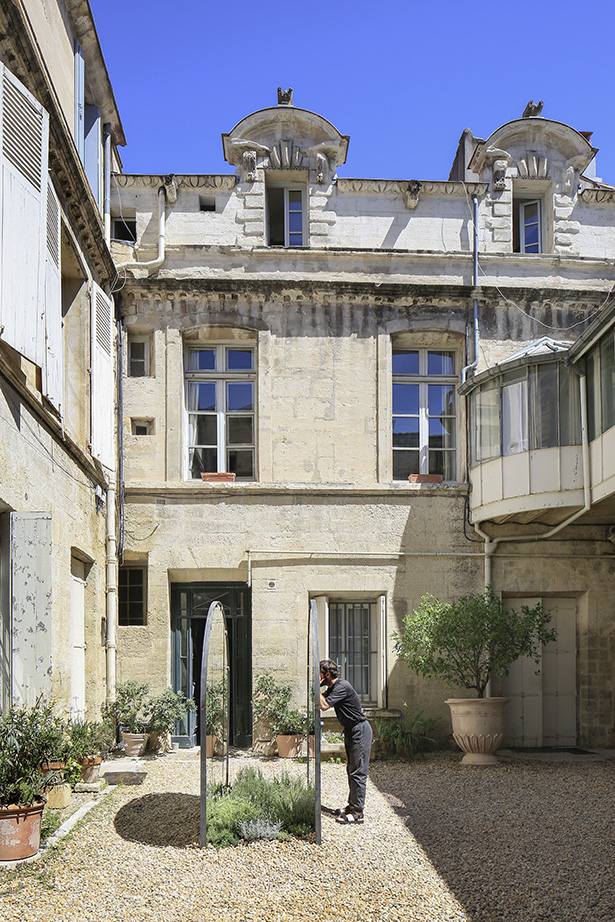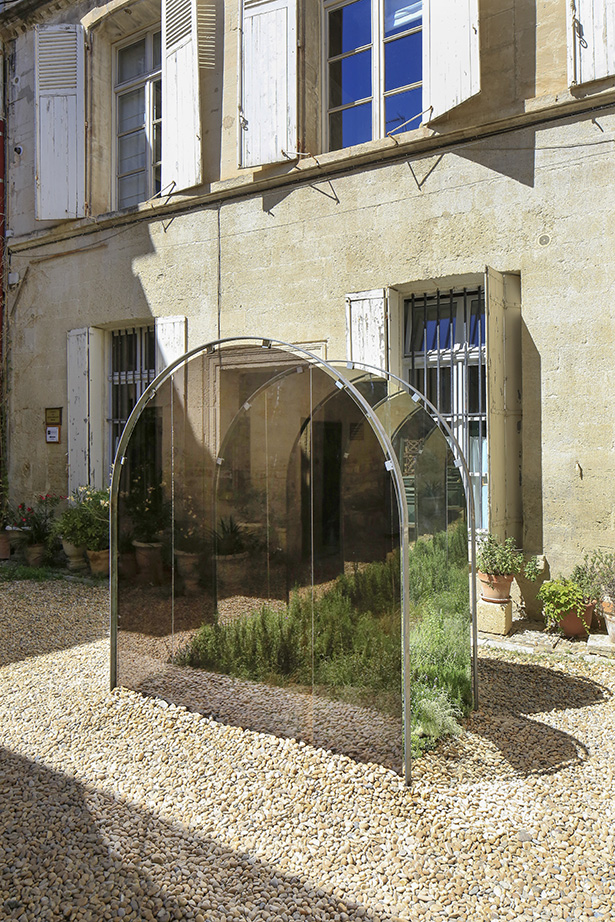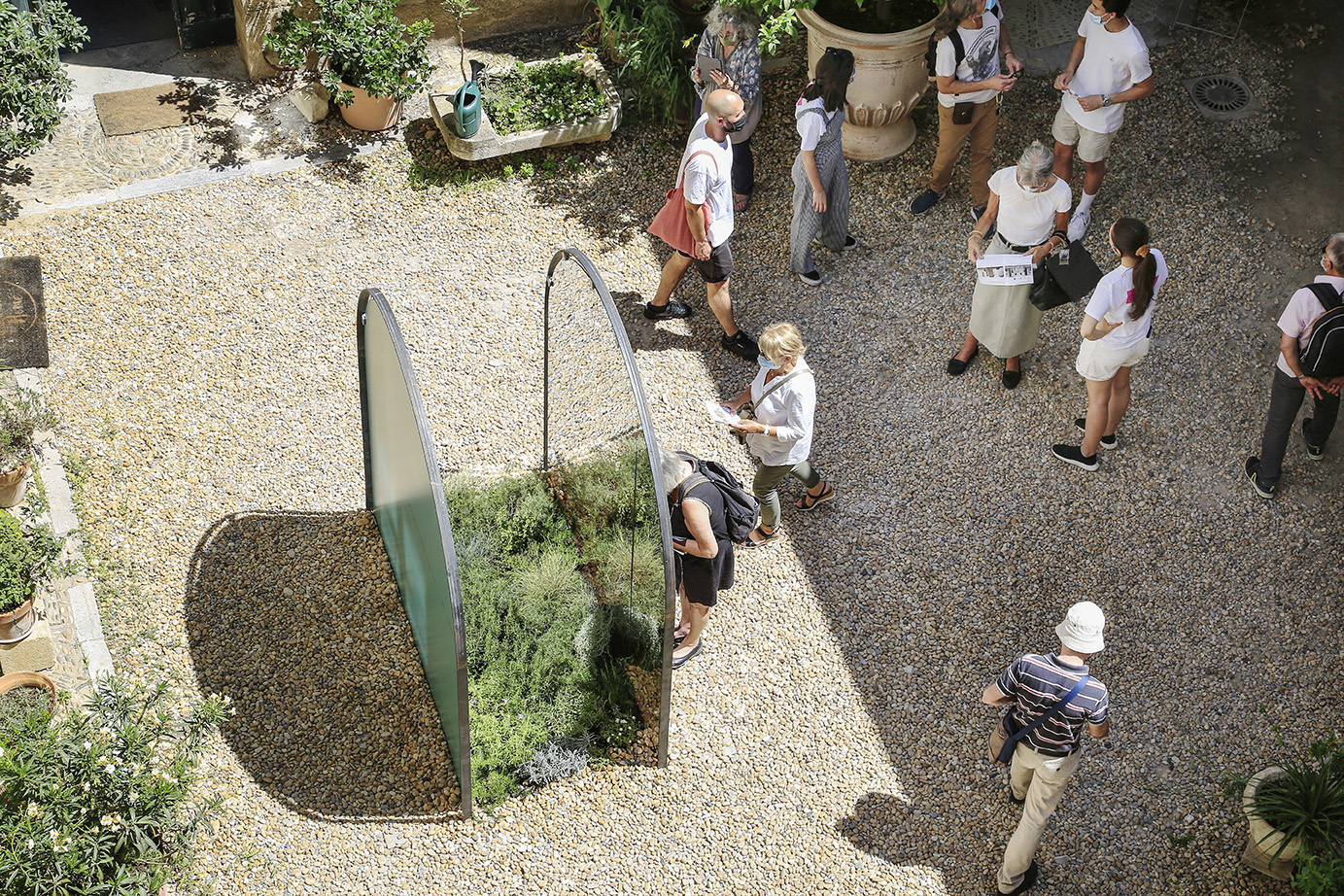AN 4000
Atelier AJO : José Roldán et Alice Delattre
Cabra // Espagne / Paris // France
Atelier AJO : José Roldán et Alice Delattre
Cabra // Espagne / Paris // France

L’Atelier AJO est la rencontre de deux architectes, Alice Delattre et José Roldán, aux approches et à la culture franco-espagnole complémentaires, née de leur première collaboration au sein de l’agence RCR arquitectes (Espagne).
L’un comme l’autre attachent autant d’importance au processus de conception et de fabrication qu’à l’objet final. Ils s’emparent de la petite échelle afin de lier la pratique de l’architecture au faire, au toucher, à la compréhension et à la recherche par l’outil de la main et ils portent une attention particulière à la matière et aux détails.
Ils souhaitent inscrire leur action dans un engagement social, avec un questionnement constant sur les enjeux actuels de l’environnement, de la consommation et du réemploi.
Atelier AJO was born from the meeting of two architects, Alice Delattre and José Roldán, with complementary Franco-Spanish approaches and cultures, after a first collaboration within RCR arquitectes agency (Spain).
Both attach as much importance to the design and manufacturing process as to the final object.
They use to work with the small scale in order to link the architectural practice to the making, the touch, the understanding and the research through the tool of the hand, and they pay specific attention to the materials and the details.
They wish to include their action in a social commitment approach, with constant questioning on the current challenges of the environment, consumption and re-use.




An 4000. Le visiteur se regarde dans le miroir et s’offre à lui l’expérience d’un scénario futur.
En approchant, son reflet s’estompe : il n’est plus. L’Humanité n’est plus. Mais la planète continue de vivre sans lui, comme elle l’a déjà fait durant les 99,9% de son histoire. Dans une longue transition et une incroyable capacité de résilience, la nature prolifère à l’infini, de toute part, absorbe toutes les traces laissées par l’Homme sur l’écosystème.
Le dispositif est simple : un miroir sans tain face à un miroir simple. Le visiteur, placé derrière le premier, s’y contemple. Mais en avançant, ce n’est plus son image qu’il voit : c’est celle de l’autre miroir et de la masse végétale qui se situe dans l’interstice entre les deux miroirs, qui se reflète à l’infini - une vision possible de l’espace submergé par la nature, dans 2000 ans -.
Year 4000. The visitor looks into the mirror and experiences a future scenario.
As he approaches, his reflection fades down: he is no more. Humanity is no more. But the planet continues to exist without him, as it did for 99.9% of its history. Through a long transition and with an incredible capacity for resilience, Nature proliferates infinitely from all sides, absorbing any traces left by Humanity on the ecosystem.
The device is simple : a one-way mirror facing a simple mirror. The visitor, placed behind the first, contemplates himself. But as he moves forward, it is no longer his image that he is seeing but the one of the other mirror and of the vegetation mass located in the gap between the two mirrors, which is reflected ad infinitum - a possible vision of the space submerged by nature in 2000 years' time.
En approchant, son reflet s’estompe : il n’est plus. L’Humanité n’est plus. Mais la planète continue de vivre sans lui, comme elle l’a déjà fait durant les 99,9% de son histoire. Dans une longue transition et une incroyable capacité de résilience, la nature prolifère à l’infini, de toute part, absorbe toutes les traces laissées par l’Homme sur l’écosystème.
Le dispositif est simple : un miroir sans tain face à un miroir simple. Le visiteur, placé derrière le premier, s’y contemple. Mais en avançant, ce n’est plus son image qu’il voit : c’est celle de l’autre miroir et de la masse végétale qui se situe dans l’interstice entre les deux miroirs, qui se reflète à l’infini - une vision possible de l’espace submergé par la nature, dans 2000 ans -.
Year 4000. The visitor looks into the mirror and experiences a future scenario.
As he approaches, his reflection fades down: he is no more. Humanity is no more. But the planet continues to exist without him, as it did for 99.9% of its history. Through a long transition and with an incredible capacity for resilience, Nature proliferates infinitely from all sides, absorbing any traces left by Humanity on the ecosystem.
The device is simple : a one-way mirror facing a simple mirror. The visitor, placed behind the first, contemplates himself. But as he moves forward, it is no longer his image that he is seeing but the one of the other mirror and of the vegetation mass located in the gap between the two mirrors, which is reflected ad infinitum - a possible vision of the space submerged by nature in 2000 years' time.





©photoarchitecture

